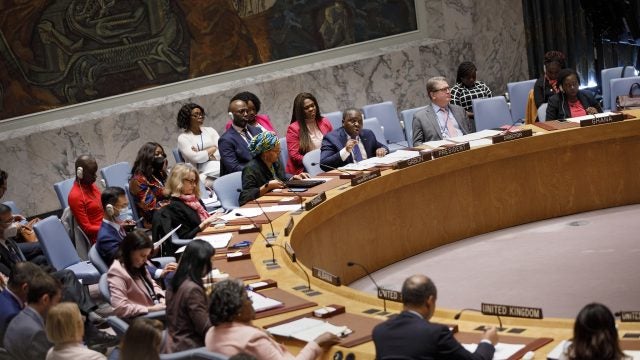Title: India, Iran and the US: Three to tango?
There’s saber-rattling in Washington and Tehran. US policymakers and the security community continue to debate whether a military strike is the only option available to defuse the Iran dilemma. Apart from war cries, there are numerous sanctions with more teeth awaiting the Iranians after the IAEA confirmation of the nation’s enrichment activities. The Obama administration welcomed the New Year with a fresh round of sanctions on Iran that penalize any financial institution dealing with Iran’s central bank. Its direct implication (one which Washington is well aware of) is that Iran’s few trading partners find it increasingly difficult to pay for their oil imports.
This limited list includes but is not limited to China, Russia, India, Japan and the EU. As expected, the EU promptly fell in line, and with a little coaxing, Japan too. Tokyo went so far as to urge the US to get China and India on board. “Without cooperation within the world community, there’s no way to carry out effective sanctions,” Japanese Foreign Minister Koichiro Gemba declared, stressing the need for other major Asian economies to follow suit. Yet the response to the Japanese, as well as the US efforts (US Treasury Secretary Timothy F. Geithner’s visits to Tokyo and Beijing) to isolate the Middle Eastern nation, has been anything but promising.
India—Iran’s second largest oil buyer after China—has announced it will not seek a waiver from the US. For India, the third largest Asian economy, Iran provides over 12 percent of its oil needs, placing it second to Saudi Arabia. Indian Foreign Secretary Ranjan Mathai declared, “We have accepted sanctions which are made by the United Nations. Other sanctions do not apply to individual countries. We continue to buy oil from Iran.” An Indian delegation also visited Tehran to brainstorm payment options which may include settling dues with other nations from whom Iran imports in their local currency or any internationally accepted one.
However, unlike China, India’s growing ties with Washington in the last decade have forced the South Asian power to walk a tightrope balancing relations with the US against its own strategic interests. India remains determined to maintain a relationship with Iran, a regional partner who shares its ideal of geopolitical independence. In addition to ‘strategic autonomy,’ the two nations continue to highlight their historical friendship stemming more from common heritage than political leaning, which in more recent times has been fraught with contradictions. For instance, pre-revolution Iran associated itself with a Western proclivity while India advocated a non-alignment approach towards Cold War politics.
In the nuclear arena, India has always believed that Iran has the right to pursue a nuclear program for civilian needs but must clarify its position with the IAEA regarding the Nuclear Non-Proliferation Treaty (NPT). India supports non-proliferation and views Iran’s nuclear program as detrimental to its own interests given that Iran shares the same neighborhood, which already accommodates nuclear Pakistan.
The last time India treaded the fine line between appeasing Washington and Tehran was at the IAEA vote on Iran’s nuclear program in 2006. With the Indo-US nuclear deal framework under discussion, India gave in to US pressure and backed the Bush administration against Tehran. Iran became the ‘litmus test’ India would have to continuously pass to please American lawmakers. For Teheran, the betrayal steered it toward closer economic ties with China particularly as an energy partner.
Despite restoring ties after that low, New Delhi still has a lot of catching up to do in terms of economic engagement. A $22 billion liquefied natural gas (LNG) deal negotiated in 2005 is yet to be implemented because the construction of the plant by India would require US components. In 2010, US pressure forced India’s Reliance Industries to pull out from refining Iranian crude. Another project in limbo is a $7 billion Iran-Pakistan-India pipeline. For now, India’s attempts to secure energy for its fast-growing consumption seem to have gained the upper hand with ‘rogue state’ Iran remaining a core energy partner. At the same time, the Indian government indicates it is working towards maximizing alternatives to Iranian crude including broadening existing trade relations with other Gulf states.
India’s diplomatic dexterity may be admirable but the greater challenge that remains is whether India can continue to successfully balance its national interests against its responsibilities as a growing international player with serious ambitions that include the quest for a permanent seat on the UN Security Council.
. . .
Sumitha Narayanan Kutty is an editorial assistant for the online section of the Georgetown Journal and a student in the MA in Security Studies Program at Georgetown University.
This is an archived article. While every effort is made to conserve hyperlinks and information, GJIA’s archived content sources online content between 2011 – 2019 which may no longer be accessible or correct.
Recommended Articles

This article explores the uncertain future of Arctic governance amid shifting global geopolitics. It argues that whether Washington and Moscow opt for confrontation or cooperation, multilateralism in the Arctic…

Twenty-five years ago, the United Nations Security Council adopted Resolution 1325, establishing a framework that underpins the Women, Peace, and Security (WPS) Agenda. The Resolution recognized both the…

When we analyze conflicts in the Middle East, we are not analyzing conflicts with isolated impacts but risks for global energy security. Recent conflicts in the Middle East have highlighted…